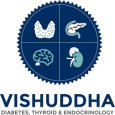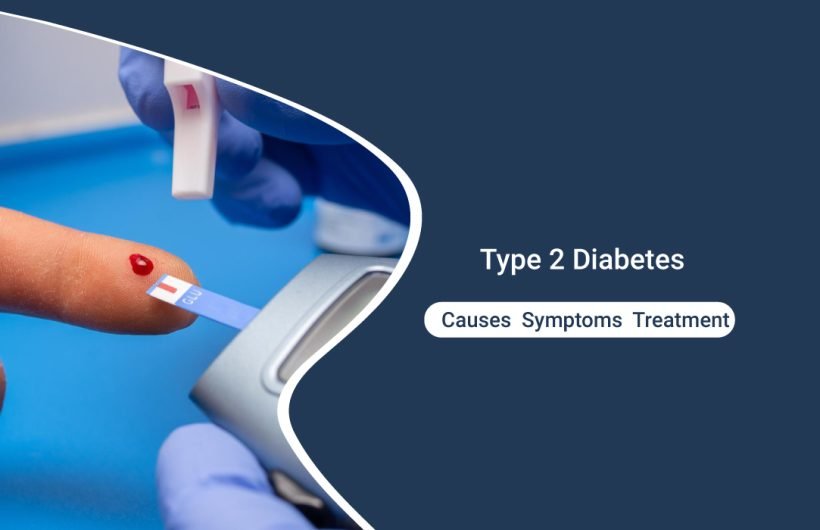A difficulty with how the body controls and uses sugar as fuel leads to type 2 diabetes. The name glucose is also used for the sugar. Too much sugar is circulating in the blood as a result of this chronic illness. Type 2 diabetes has two issues. The pancreas may not create enough insulin, a hormone that regulates how rapidly sugar enters cells. Additionally, cells take up less sugar and respond to insulin poorly. Type 2 diabetes was previously referred to as adult-onset diabetes, despite the fact that both type 1 and type 2 can begin in childhood and beyond age 35, respectively. Age increases the likelihood of having type 2. However, the rise in the proportion of obese children is leading to a greater number of young people having type 2 diabetes.

What is type 2 diabetes?
Type 2 diabetes is a chronic condition that prevents your body from utilizing insulin as it should. The majority of those who get this type of diabetes are middle-aged or older individuals. Diabetes mellitus or adult-onset diabetes were its previous names. However, type 2 diabetes also affects children and adolescents, primarily as a result of childhood obesity. In the US, type 2 diabetes affects roughly one in ten persons. One in three people have prediabetes, which is elevated blood sugar (or blood glucose) but not yet diabetes.
Treatment for type 2 diabetes
Medication and lifestyle adjustments are both used to manage type 2 diabetes.
- Lifestyle Adjustments: With just food and exercise, you might be able to achieve your desired blood sugar levels.
- Losing additional weight can be beneficial: While decreasing 5% of your body weight is beneficial, losing at least 7% of it and maintaining it looks ideal. Therefore, decreasing about 13 pounds can lower blood sugar levels in a person who weighs 180 pounds. Portion control and eating healthy foods are wonderful places to start if you want to lose weight, even though it can feel daunting.
- Eating well: There isn’t a special diabetes diet for those with type 2 diabetes. A licensed dietician can educate you on carbohydrates and assist you in creating a meal plan that you can follow. Think about:
- Cutting back on calories
- Reducing intake of refined carbohydrates, especially sugars
- Add fruits and vegetables to your diet
- Increasing fiber intake
- Exercise: Aim for 30 to 60 minutes of daily physical activity. Exercises that raise your heart rate include walking, biking, swimming, and other activities. Combine that with strength training exercises like weightlifting or yoga. You might require a snack prior to exercise if you take a prescription that decreases your blood sugar.
- Watch your blood sugar levels: Your doctor will advise you whether you need to test your blood sugar levels and how frequently to do so based on your therapy, particularly if you’re taking insulin.
- You may require medication if lifestyle modifications are ineffective in helping you reach your goal blood sugar levels. For type 2 diabetes, a few of the most typical symptoms are:
- DPP-4 inhibitors
- GLP-1 receptor agonists
- SGLT2 inhibitors
- GIP and GLP-1 receptor agonist
- Insulin
- Metformin
- Sulfonylureas
- Meglitinides
- Thiazolidinediones
Symptoms Type 2 Diabetes
Feeling extremely thirsty, urinating more frequently than usual, and being exhausted constantly are all signs of diabetes. Because the glucose is not used as fuel for energy, some, or all of it remains in your blood, which causes the symptoms. Your urine is an attempt by your body to flush out extra glucose. The symptoms of type 2 diabetes include:
- Urinating more frequently than usual
- Feeling extremely thirsty
- Feeling extremely exhausted
- An inexplicable loss of weight
- Itching in the vaginal region
- Insufficiently healing cuts or wounds
- Dried-out eye lens, which results in blurry vision
However, these symptoms aren’t usually as visible, and the condition is frequently discovered during a routine checkup. This is because they frequently have minor symptoms and take years to manifest. You could have type 2 diabetes and not even be aware of it for many years, according to this. Type 2 diabetes should always be diagnosed and treated as soon as possible because doing so may lower your chance of complications in the future. Visit your doctor if you get dark rashes under your arms or around your neck. Acanthosis nigricans are what they are known as, and they may indicate that your body is becoming insulin resistant.
What causes type 2 diabetes
Type 2 diabetes arises when the cells do not react to insulin or when the body does not produce enough insulin to maintain its own health. This demonstrates that glucose is not metabolized into energy but rather stays in the bloodstream. Obesity and type 2 diabetes are frequently associated, and older people have a higher likelihood of receiving a diagnosis. Young people and persons of all ages are now more likely to get type 2 diabetes as a result of the rise in obesity.
After a diagnosis
Your doctor may order further tests if you are diagnosed with diabetes in order to differentiate between type 1 and type 2 diabetes as the two disorders frequently require distinct therapies. At least twice a year, as well as if there are any treatment modifications, your doctor will test your A1C levels. Age and other factors affect the target A1C objectives, which vary. The American Diabetes Association advises an A1C level of less than 7% for most persons. Additionally, you get examinations to check for other illnesses and diabetes-related problems.
Conclusion
Type 2 diabetes is a dangerous condition that needs to be managed constantly. You can keep it under control by losing weight, leading a healthy lifestyle, and taking medication if necessary. You can live a longer, healthier life with their assistance. For more, do contact Diabetes Specialist in Ahmedabad Dr. Moxit Shah.






